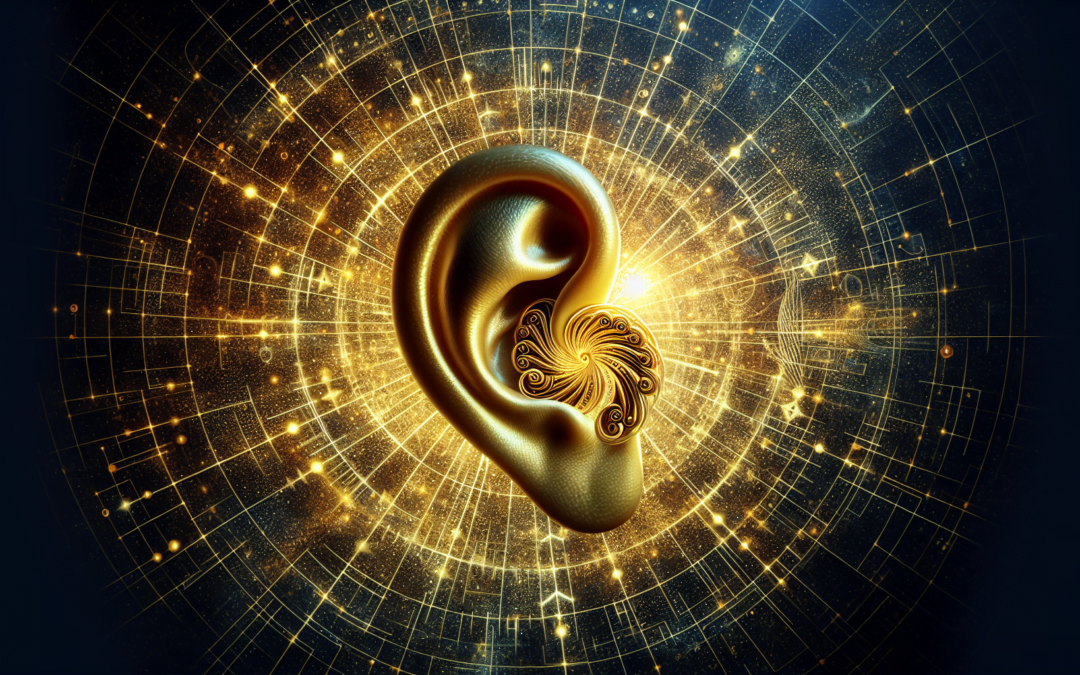Imagine a world where hearing loss is no longer a barrier to communication and connection. Thanks to groundbreaking research, this dream may soon become a reality. Scientists have recently achieved a significant breakthrough in understanding the mechanisms behind hearing loss and are on the brink of developing revolutionary treatments. The implications of this research are enormous, offering hope and possibilities for millions of individuals affected by hearing loss worldwide. In this article, we will explore the exciting findings and discuss how they could potentially transform the lives of those living with hearing impairment. So, fasten your seatbelts and get ready to embark on a journey of discovery into the fascinating realm of hearing loss research.
I. Definition of Hearing Loss

A. Explanation of hearing loss
Hearing loss refers to a reduced ability to hear sounds, either partially or completely. It can affect individuals of all ages and can have a significant impact on their daily lives. Hearing loss can result from various factors such as genetics, aging, exposure to loud noises, certain medical conditions, and medications. Understanding the different types and causes of hearing loss is crucial in developing effective treatments and interventions.
B. Types and causes of hearing loss
There are three main types of hearing loss: conductive, sensorineural, and mixed. Conductive hearing loss occurs when sound waves cannot reach the inner ear due to problems in the outer or middle ear. This type of hearing loss can be caused by earwax buildup, fluid accumulation, damage to the eardrum, or abnormal bone growth.
Sensorineural hearing loss, on the other hand, happens when there is damage to the inner ear or the auditory nerve. It is the most common type of hearing loss and can result from aging, prolonged exposure to loud noises, genetic factors, infections, or certain medications. Mixed hearing loss is a combination of both conductive and sensorineural hearing loss.
II. Prevalence of Hearing Loss
A. Statistics on hearing loss worldwide
Hearing loss affects a significant portion of the global population. According to the World Health Organization (WHO), over 5% of the world’s population, or 466 million people, have disabling hearing loss. Approximately 34 million of these individuals are children. The prevalence of hearing loss tends to increase with age, with more than one-third of individuals above the age of 65 experiencing some degree of hearing impairment.
B. Age-related hearing loss
Age-related hearing loss, also known as presbycusis, is a common form of sensorineural hearing loss that occurs gradually as people get older. It is estimated that by the age of 75, nearly 50% of individuals will have hearing loss. This decline in hearing sensitivity can impact various aspects of one’s life, including communication, social interactions, and overall well-being.
C. Impact of hearing loss on individuals and society
Hearing loss can have a profound impact on individuals and society as a whole. For individuals, it can lead to feelings of isolation, communication difficulties, reduced quality of life, and cognitive decline. In the workplace, hearing loss can affect job performance and opportunities for career advancement. From a societal perspective, hearing loss can result in increased healthcare costs, reduced productivity, and limited educational opportunities.
III. Conventional Treatments for Hearing Loss
A. Hearing aids
Hearing aids are the most common and widely used devices for managing hearing loss. They work by amplifying sound and improving the perception of speech and other environmental sounds. Modern hearing aids are highly advanced, utilizing digital signal processing to enhance sound quality and reduce background noise. The use of hearing aids can significantly improve communication and alleviate the negative effects of hearing loss.
B. Cochlear implants
Cochlear implants are electronic medical devices used for individuals with severe to profound hearing loss who do not benefit from hearing aids. Unlike hearing aids, which amplify sound, cochlear implants bypass the damaged parts of the inner ear and directly stimulate the auditory nerve. These implants consist of an external sound processor and an internal implant that is surgically placed under the skin. Cochlear implants can provide access to sound and enable individuals to perceive speech, enhancing their communication abilities.

IV. Recent Advancements in Understanding Hearing Loss
A. Genetic research on hearing loss
Advancements in genetic research have shed light on the role of specific genes in hearing loss. Scientists have identified numerous genes associated with inherited hearing loss, providing valuable insights into the underlying mechanisms of the condition. This understanding paves the way for developing targeted therapies and interventions that can address the genetic causes of hearing loss.
B. Role of aging and exposure to loud noises
Further research has highlighted the impact of aging and exposure to loud noises on hearing loss. Age-related hearing loss is believed to result from a combination of genetic and environmental factors, including cumulative exposure to noise throughout one’s lifetime. Understanding the relationship between aging, noise exposure, and hearing loss can help in developing preventive strategies and interventions to mitigate the effects.
C. Study on the impact of certain medications on hearing loss
Several studies have explored the association between specific medications and hearing loss. Certain antibiotics, chemotherapy drugs, and nonsteroidal anti-inflammatory drugs (NSAIDs) have been linked to hearing damage. Identifying these potential ototoxic medications is crucial for patient safety and ensuring that individuals receive appropriate medical treatment without compromising their hearing health.
V. Breakthrough Research on Gene Therapy for Hearing Loss
A. Definition and explanation of gene therapy
Gene therapy is a promising approach to treat various genetic disorders, including inherited hearing loss. It involves introducing functional genes into the body to replace or repair defective ones. In the context of hearing loss, gene therapy aims to restore the function of genes associated with hearing loss, thereby improving or restoring auditory function.
B. Successes in gene therapy for inherited hearing loss
Breakthrough research has demonstrated successful outcomes in gene therapy for inherited hearing loss. Animal studies have shown that introducing functional genes into the inner ear can restore hearing in genetically modified mice and guinea pigs. These results provide hope for the development of gene therapies that can be effective in humans with inherited hearing loss.
C. Challenges and future prospects of gene therapy
While gene therapy holds great promise, there are several challenges that need to be addressed for its successful implementation in clinical practice. Effective delivery of genes to the inner ear, ensuring long-term gene expression, and minimizing potential side effects are among the key challenges. However, continued research and advancements in gene delivery systems are expected to overcome these obstacles, opening up exciting possibilities for the future treatment of hearing loss.

VI. Stem Cell Therapy for Hearing Loss
A. Introduction to stem cell therapy
Stem cell therapy involves the use of undifferentiated cells that have the potential to develop into various types of specialized cells. In the context of hearing loss, stem cell therapy aims to regenerate damaged cells in the inner ear, including sensory hair cells and supporting cells. The regeneration of these cells can potentially restore hearing function.
B. Promising results of stem cell therapy in animal studies
Animal studies have shown promising results in using stem cell therapy to restore hearing. Researchers have successfully grown functional hair cells from stem cells and transplanted them into the inner ear of mice with hearing loss, resulting in improved hearing function. These findings provide a strong foundation for further research and the potential development of stem cell-based therapies for humans.
C. Clinical trials and potential for human application
Although stem cell therapy for hearing loss is still in the early stages of development, there are ongoing clinical trials exploring its safety and efficacy in humans. These trials aim to assess the feasibility and potential benefits of stem cell-based treatments for individuals with hearing loss. While there are still challenges to overcome, such as ensuring proper differentiation and integration of stem cells, the potential for regenerating hearing through this innovative approach is promising.
VII. Nanotechnology Applications in Hearing Loss Treatment
A. Overview of nanotechnology
Nanotechnology involves manipulating materials at the nanoscale, typically in the range of 1 to 100 nanometers, to create unique properties and applications. In the context of hearing loss, nanotechnology offers promising opportunities for targeted and precise interventions due to its ability to work at the molecular level.
B. Nanotechnology tools for hearing loss treatment
Nanotechnology has led to the development of various tools and devices for hearing loss treatment. These include nano-coatings for improving the performance of hearing aids, nanofabricated electrodes for cochlear implants to enhance their efficacy, and nanosensors for detecting and monitoring hearing loss. The use of nanotechnology in these applications has the potential to enhance the effectiveness and reliability of current treatments.
C. Nanoparticles for drug delivery to the inner ear
One significant application of nanotechnology in hearing loss treatment is the use of nanoparticles for targeted drug delivery to the inner ear. Nanoparticles can encapsulate drugs and transport them to specific sites within the cochlea, allowing for precise treatment of underlying conditions that cause hearing loss. This approach minimizes systemic side effects and improves the effectiveness of drug therapies, offering new avenues for personalized and targeted hearing loss treatments.

VIII. Advances in Auditory Brainstem Implants
A. Overview of auditory brainstem implants
Auditory brainstem implants (ABIs) are neuroprosthetic devices used in individuals who are unable to benefit from cochlear implants due to the absence or damage of the auditory nerve. ABIs bypass the damaged auditory nerve and directly stimulate the cochlear nucleus in the brainstem, enabling a sense of sound perception.
B. Comparison with cochlear implants
Auditory brainstem implants differ from cochlear implants in terms of their target site for stimulation. While cochlear implants stimulate the auditory nerve, ABIs stimulate the cochlear nucleus in the brainstem. ABIs are typically indicated for individuals with complex hearing loss, including those with auditory nerve tumors, cochlear nerve aplasia, or other abnormalities that prevent the use of cochlear implants.
C. Successes and future possibilities of auditory brainstem implants
Auditory brainstem implants have shown promising outcomes in individuals with neurofibromatosis type II and other conditions that result in severe bilateral hearing loss. While ABIs do not provide the same level of hearing restoration as cochlear implants, they can offer sound perception and speech understanding in individuals who would otherwise have no auditory cues. Ongoing research aims to improve the technology and expand the indications for auditory brainstem implants, offering hope for more individuals with complex hearing loss.
IX. Regenerative Medicine for Hearing Loss
A. Introduction to regenerative medicine
Regenerative medicine focuses on restoring the structure and function of damaged tissues or organs. In the context of hearing loss, regenerative medicine aims to regenerate damaged sensory hair cells and supporting cells in the inner ear, which are essential for auditory function. This field offers exciting potential for restoring hearing function and overcoming the limitations of current treatment options.
B. Promise of regenerative medicine in restoring hearing
Regenerative medicine holds great promise in restoring hearing by regenerating the damaged cells in the inner ear. Scientists have made significant progress in developing techniques to generate functional hair cells and supporting cells from stem cells or other cell sources. The ability to restore these crucial cells has the potential to revolutionize the treatment of hearing loss and offer hope for individuals with irreversible hearing impairment.
C. Current research and challenges
Current research in regenerative medicine for hearing loss focuses on refining cell differentiation protocols, optimizing cell delivery methods, and improving the integration of regenerated cells into the existing auditory system. Challenges remain, such as ensuring the long-term survival and functionality of regenerated cells and addressing potential immune response issues. However, the rapid advancements in regenerative medicine hold promise for the future development of revolutionary treatments for hearing loss.
X. Conclusion
A. Recap of breakthrough research on hearing loss
In recent years, breakthrough research has significantly advanced our understanding of hearing loss and opened up exciting possibilities for its treatment. Genetic research, stem cell therapy, gene therapy, nanotechnology, and regenerative medicine have all offered insights and potential solutions for individuals with hearing loss. These advancements have the potential to transform the lives of millions affected by hearing loss, offering them improved hearing, enhanced communication, and a better quality of life.
B. Implications for the future of hearing loss treatment
The advancements in understanding and treating hearing loss provide a glimpse into the future of hearing healthcare. With ongoing research and continued collaboration between scientists, healthcare professionals, and technology developers, we can expect further breakthroughs in the coming years. The development of personalized and targeted treatments, which consider the unique needs and characteristics of individuals with hearing loss, will continue to be at the forefront. By harnessing the power of modern technology and innovative approaches, we can achieve a world where hearing loss is no longer a barrier to communication and living a fulfilling life.
